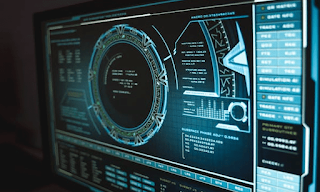A Complete Guide on Data Anonymization for Protecting Sensitive Information
Protecting sensitive information has become a
primary issue for people, organizations, and governments alike in the current
digital landscape. Strong information security is now more important than ever
as data collection and sharing keep growing. Data anonymization is one strategy
that has gained a lot of attention recently and is extremely effective. This
tactical procedure centers on removing personally identifiable information
(PII) from datasets, protecting privacy while maintaining the intrinsic value
of the data. We'll go into the world of data anonymization and how crucial it
is to protect sensitive information in this article.
Data anonymization is the process of
transforming data so that it is difficult to identify the identities of certain
people or entities. The main goal is to maintain the usefulness of the data for
analysis, research, and other reasons while providing strict privacy
protections. Organizations can work with other parties, conduct research, and
do data analysis using anonymized data without breaking privacy laws or
disclosing sensitive information.
Typical Data Anonymization Methods
There are various methods for data
anonymization, each with unique advantages and potential drawbacks. Let's look
at some of the most popular techniques:
Pseudonymization:
With this technique, identifying data is replaced with fictitious identifiers or pseudonyms. This method prevents individuals from being directly identified while allowing for the flexible use of data. However, it is crucial to exercise caution because further information may be able to re-identify threats by connecting pseudonyms to specific people.
Generalization:
Aggregating data into broader
categories to whittle down granularity is known as generalization. For
instance, data may be generalized into age ranges rather than keeping specific
ages. Although this method effectively protects privacy, it may result in less
granularity, which may affect the data's usefulness for some analysis.
Data masking:
Data masking is the process of
partially or completely obscuring sensitive data. To hide data pieces, methods
such as data redaction, encryption, and tokenization are used. Sensitive
information is kept hidden thanks to data masking, enabling
analysis and research on the anonymized dataset.
The Challenges of Data Anonymization
Although data anonymization is a powerful tool
for protecting sensitive information, it is important to understand its limitations.
Finding the right level of anonymization might be challenging. While
under-anonymization raises privacy problems, over-anonymization may make the
data less usable for research. Before using anonymization techniques, it is
crucial to understand the situation, follow the law, and consider
certain use cases.
Additionally, it is critical to understand
that data anonymization is a continuous process. Re-anonymization might be
required to maintain privacy standards as new data is incorporated into current
databases. Anonymization techniques should be periodically reviewed and updated
to take into account new re-identification strategies and increasing privacy
laws.
The observance of data privacy laws
Personal data protection has received more attention
recently thanks to data privacy laws like the California Consumer Privacy Act
(CCPA) and the General Data Protection Regulation (GDPR) in the US and Europe,
respectively. These restrictions compel businesses to adopt privacy-enhancing
technology, such as data anonymization, in order to comply with legal
requirements and build customer trust.
Conclusion
In conclusion, data anonymization is a crucial
technique in our data-driven society for protecting sensitive information.
Organizations can achieve a healthy balance between data utility and privacy
protection by using pseudonymization, generalization, data
masking, and noise addition. However, it is still essential to regularly assess
the effectiveness of anonymization techniques and adapt them to changing
privacy requirements. Data anonymization will continue to play a crucial role
as a defender of private information and individual privacy as our world
becomes more linked.



